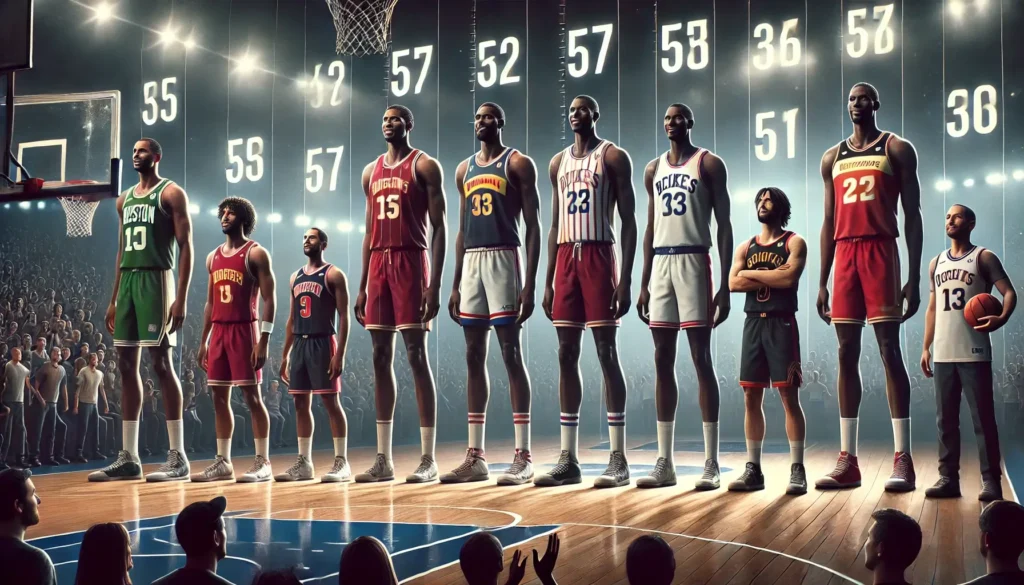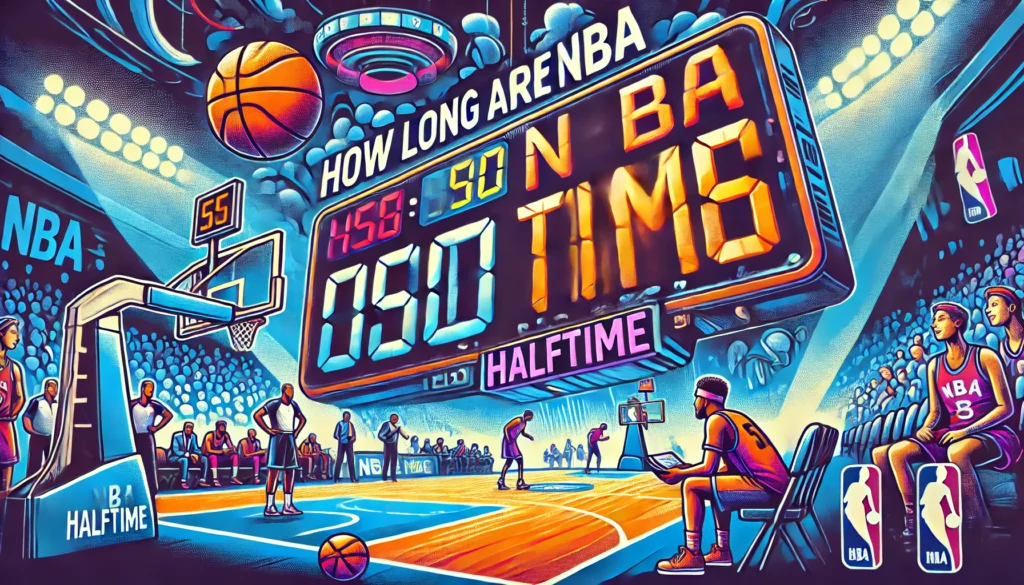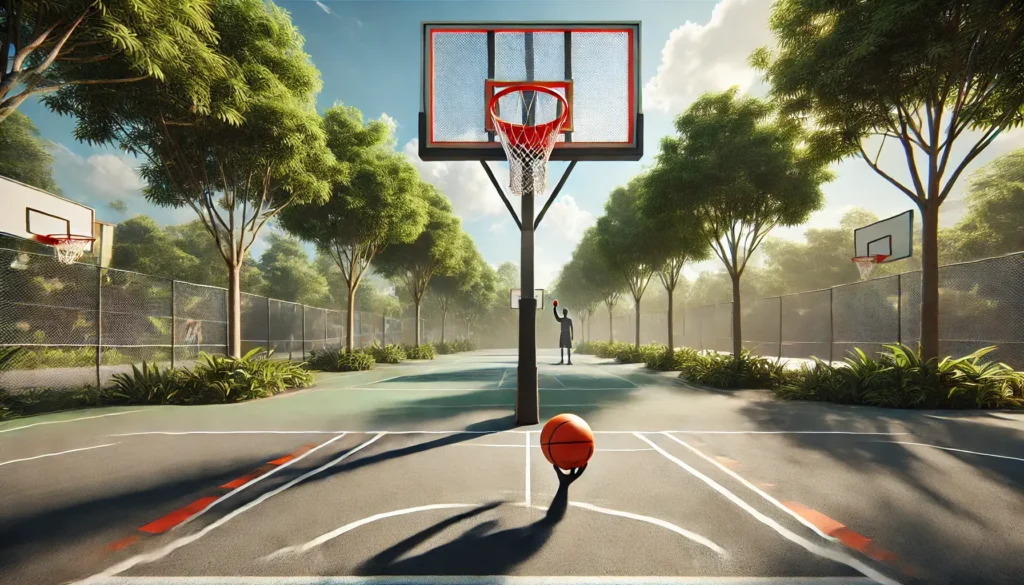Basketball has long been associated with tall players, as those who exceed average height often possess significant advantages on the court. Genetics plays a crucial role in determining a player’s height, which can greatly impact their performance and position in the game. The evolution of basketball as a sport has favored taller individuals, leading to a noticeable trend in player selection that prioritizes height.
In addition to genetics, physiological factors contribute to the advantages tall athletes have in basketball. These players can reach the basket more easily, block shots effectively, and secure rebounds, making them invaluable on any team. Furthermore, the culture surrounding basketball often emphasizes the importance of height, influencing both player aspirations and recruitment strategies.
As fans and players alike ponder the height advantage in basketball, it’s essential to explore the various elements that have shaped the game. Understanding these facets offers insight into not only the sport itself but also how these factors create a competitive environment that elevates taller players in professional leagues.
Key Takeaways
- Genetics significantly influences height, impacting player performance.
- Taller players often have physiological advantages on the court.
- Cultural factors shape recruitment and player aspirations in basketball.
The Role of Genetics in Player Height
Genetics plays a significant role in determining the height of individuals, influenced by various hereditary factors. Basketball players often have heights that exceed the average, largely due to genetic predispositions.
Inheritance of Height
Height is influenced by multiple genes inherited from both parents. Studies suggest that approximately 80% of a person’s height can be attributed to genetics. Specific gene variations are associated with growth and development, impacting how tall a person can grow.
Height tends to run in families; for instance, children of tall parents are more likely to be tall themselves. Environmental factors also interact with genetics, including nutrition and health during childhood, which can aid in reaching genetic potential.
Advantages of Height in Basketball
In basketball, height provides several advantages on the court. Taller players have improved access to the basket, making it easier for them to shoot over opponents. Their wingspan allows for better defense and rebounding abilities.
The average height of professional players often exceeds 6 feet 7 inches. This height not only improves shooting angles but also enhances overall visibility of the court. Taller players typically excel in positions that demand physical presence and reach, amplifying their effectiveness in the game.
Evolution of Basketball and Player Selection
Basketball has evolved significantly since its inception, impacting how players are selected. Height has become a crucial factor in recruitment as the sport has progressed, leading teams to prioritize taller athletes for competitive advantage.
Changes in the Sport Over Time
Since its creation in 1891, basketball has transformed in terms of rules, style, and gameplay. The introduction of the three-point line in the 1979-1980 season altered offensive strategies, promoting shooting skills alongside height.
As the game became faster and more dynamic, the physical presence of taller players became essential for defense and rebounding. Changes in coaching philosophies have also emphasized versatility, encouraging taller players to develop skills in various positions.
Recruitment and Scouting Emphasis on Height
Scouting practices have notably shifted with a strong emphasis on height. Coaches and recruiters often prioritize physical attributes, recognizing that taller players usually have advantages such as better shot blocking and rebounding capabilities.
Many players over 6’7″ are sought for their ability to dominate both ends of the court. Data analytics now help teams assess player performance, further amplifying the importance of height in recruitment decisions. This trend aligns with a longer-term shift towards valuing athleticism and size in basketball.
Physiological Advantages of Tall Players
Tall players possess several physiological advantages that enhance their performance on the basketball court. Their height contributes to unique skills such as reach, court vision, and defensive strength, which are critical in a competitive environment.
Reach and Wingspan
Height directly translates to increased reach and wingspan, crucial factors in basketball. A greater wingspan allows players to shoot over defenders more easily and to access rebounds effectively.
For example, a player standing at 6’10” with a wingspan of 7’3″ can reach higher and wider than a shorter player. This advantage not only aids in scoring but also improves their ability to contest shots. Coaches often emphasize the importance of wingspan in recruiting tall players, knowing they can have a significant impact on offensive and defensive plays.
Court Vision and Shooting
Tall players often enjoy improved court vision. Their elevated perspective allows them to see over defenders, facilitating better passing and shot selection. They can spot open teammates more easily and create opportunities that shorter players might miss.
In terms of shooting, height can enhance shooting angles and release points. Taller players can shoot from above defenders, creating a more effective scoring threat. Moreover, many tall players develop skills to shoot effectively from long range, adding versatility to their offensive play.
Defensive Capabilities
Defensively, height is a formidable asset. Taller players can guard multiple positions and contest shots with increased effectiveness. Their reach allows for better blocking abilities and alterations of shots taken by opponents.
Additionally, a tall presence in the paint can disrupt offensive strategies. Blocking potential shot opportunities forces opponents to adapt their gameplay. This intimidation factor creates a psychological edge, as shorter players may feel pressured when driving toward the basket.
In essence, the physiological traits associated with tall players give them distinct advantages in various aspects of the game, enhancing their overall impact on the court.
Training and Nutrition’s Impact
Training and nutrition play vital roles in the development of basketball players, especially concerning height. Proper dietary choices and targeted training regimens contribute significantly to maximizing growth potential during the formative years.
Importance of Nutrition
Nutrition is essential for athletes, particularly during their growth phases. A well-balanced diet that includes adequate protein, carbohydrates, healthy fats, vitamins, and minerals supports physical development. Key nutrients, like calcium and vitamin D, promote bone health and growth.
For basketball players, sufficient caloric intake is crucial. Young athletes often require more calories than their sedentary peers to fuel increased activity levels and support growth. A diet rich in lean meats, fish, dairy, fruits, and vegetables can enhance performance and height potential.
Hydration is equally important. Dehydration can impair physical performance. Proper hydration supports optimal body functions and recovery.
Training to Maximize Growth Potential
Strategic training enhances physical development and overall athletic performance. Strength training, flexibility work, and cardiovascular exercises contribute to muscular and skeletal development, which may positively influence height.
Incorporating plyometrics can improve explosive power, beneficial for basketball. Exercises like jump squats and box jumps not only build muscle but also encourage proper alignment during growth spurts.
Moreover, focusing on core strength is important. A strong core supports overall athleticism, facilitating better balance and coordination on the court. Additionally, individualized training programs tailored to an athlete’s specific needs can further enhance their growth potential.
Regular assessment of training effectiveness can guide adjustments to optimize development.
Cultural and Psychological Factors
Cultural and psychological influences play significant roles in the height of basketball players. These factors stem from societal norms and personal choices that lead individuals toward the sport.
Societal Perceptions of Height in Sport
Height is often viewed as an advantage in basketball, shaping perceptions in various cultures. Many societies link tall stature with athleticism and success, creating a strong incentive for individuals to pursue basketball. Media representations frequently highlight tall athletes, reinforcing the notion that height is synonymous with ability.
These perceptions can lead to increased admiration and support for taller players, creating a cycle where height becomes an expected trait for those involved in the sport. As young athletes aspire to emulate their idols, they may prioritize height as a characteristic worth developing.
Self-Selection into Basketball Based on Height
Self-selection occurs when individuals choose to participate in sports that align with their physical attributes. Taller individuals may gravitate toward basketball due to its requirements for height in gameplay dynamics, like shooting and rebounding.
Youth programs often showcase taller players in basketball settings, further encouraging the trend. This environment fosters confidence in taller individuals, who might believe they have a better chance of success in basketball compared to other sports that don’t emphasize stature as heavily.
As a result, a cycle develops where tall individuals pursue basketball, which in turn reinforces the perception that height is vital for success in the sport.
Statistical Analysis of Player Heights
Player height in basketball varies significantly across professional leagues. Research indicates that the average height for NBA players is around 6 feet 7 inches.
Height Distribution
A breakdown shows that the majority of players fall within the following height ranges:
| Height Range | Percentage of Players |
|---|---|
| 6’0″ – 6’3″ | 15% |
| 6’4″ – 6’7″ | 30% |
| 6’8″ – 6’10” | 35% |
| 6’11” and above | 20% |
Key Trends
- Historical Increase: Player heights have increased over the past decades. In the 1980s, the average was about 6 feet 6 inches.
- Position Variability: Centers tend to be the tallest, often exceeding 7 feet. Guards are typically shorter, averaging around 6 feet 3 inches.
Correlation with Performance
Studies suggest a correlation between height and performance metrics, such as rebounds and blocks. Taller players tend to excel in these areas, impacting team dynamics.
Conclusion
The statistical analysis of player heights reveals significant trends and correlations that contribute to understanding the game’s physical demands. This data aids teams in scouting and developing player rosters.
Frequently Asked Questions
Many factors influence a basketball player’s height and its importance in the sport. The following questions address how height affects performance, the average height of players, and the role of skills and genetics.
How does height impact a basketball player’s performance?
Height can provide advantages in various positions on the court. Taller players tend to have better reach for rebounds and shot-blocking.
What is the average height of professional basketball players?
The average height of professional male basketball players in the NBA is around 6 feet 7 inches. Female players in the WNBA average about 6 feet.
Can shorter players succeed at a professional level in basketball?
Yes, shorter players can succeed in professional basketball. Many shorter players have excelled by leveraging speed, agility, and skill.
Are there advantages to being taller in basketball?
Taller players often benefit from a physical presence that assists in scoring, rebounding, and defense. Height can also create mismatch opportunities against opponents.
Do genetics play a significant role in the height of basketball players?
Genetics significantly influences a player’s height. Family history often correlates with a person’s potential for height.
Is height a requirement for professional basketball, or can skills compensate?
While height is beneficial, skills can also lead to success. Many players with exceptional skills have made significant impacts despite not being notably tall.












